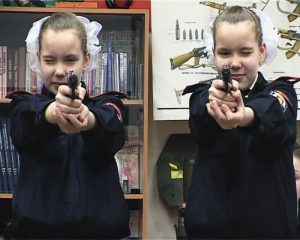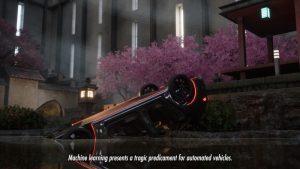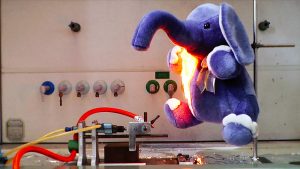More notes from my conversation with Antonio Cerveira Pinto, the curator of Bios 4. It’s probably the first time that so many unstable art works are being shown for several months in a museum (as opposed to a few days in an art gallery during a festival) and, as Antonio notes, the experience has shown that there’s a whole new relationship to be built between on the one hand, artists who use technology in their practice and on the other hand, museums which are usually wary of showing works that are not static and “quiet” like paintings are.
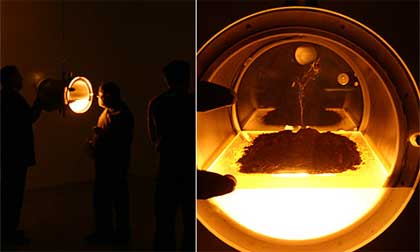
The existence of bio art, environmental art and in general new media art constitutes a challenge for museums. They have to be aware that art is evolving, and open up to new artistic forms. New expertise is needed to deal with machines and living things. Robots need to “rest”, for example. Otherwise their electro-circuit dies. Museum curators and directors also have to accept that if you want to hide a computer in a sleek box just because it is “ugly”, the container should be big enough to avoid any crash when the machine heats up.
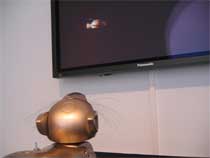
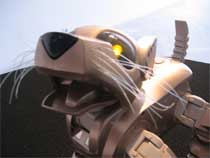
When preparing an exhibition, Antonio Cerveira Pinto likes to set up a small workshop with the museum employees, to explain them what the works are about, how the public should interact with them, what they must be cautious of, etc. I often noticed that exhibition attendants (how do you call them? guards?) seem to be quite happy when they have to keep an eye on interactive pieces. They are proud of showing you how to play with the art work, which buttons should be pushed and how, propose to take a picture of you when you play with a screen-based work, smile when they see how much kids or adults engage with the work, etc. Suddenly they have something to do, they have a knowledge to share.
Artists on the other hand, have to specify clearly how the museum has to manage and take care of the electronic, digital or living bits of their work when they are exhibited over a long period of time (as these pieces are usually shown in the context of a one-week festival). Another challenge for artists is to become experts in usability and design clear interfaces that tell visitors how to interact with their pieces.
The public too has to learn how to engage with these art pieces, adults in particular have spent decades being told “Don’t touch!” “Don’t go too close!”, etc. Both museums and artists will have to take these challenges into account.
First image is from C-Lab‘s project The Martian Rose. See also their interview and the report they wrote of Bios 4.
Second set of images is from the installation Do robotic cats dream of electric fish? by France Cadet.


